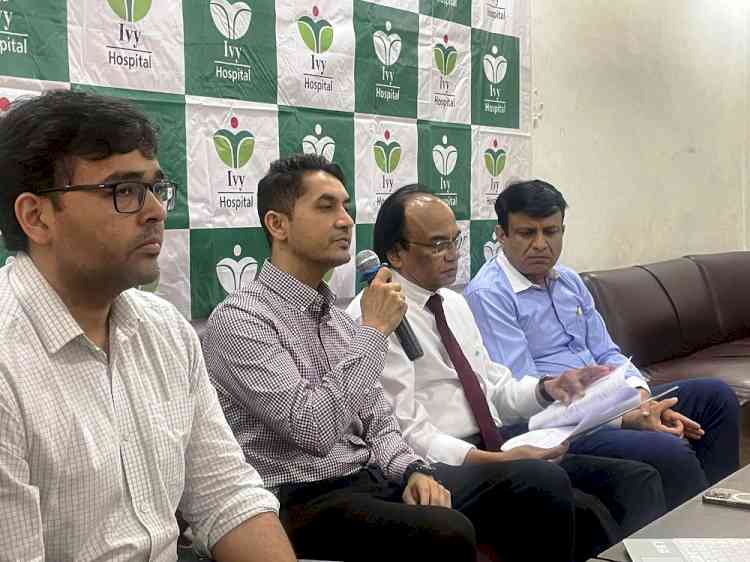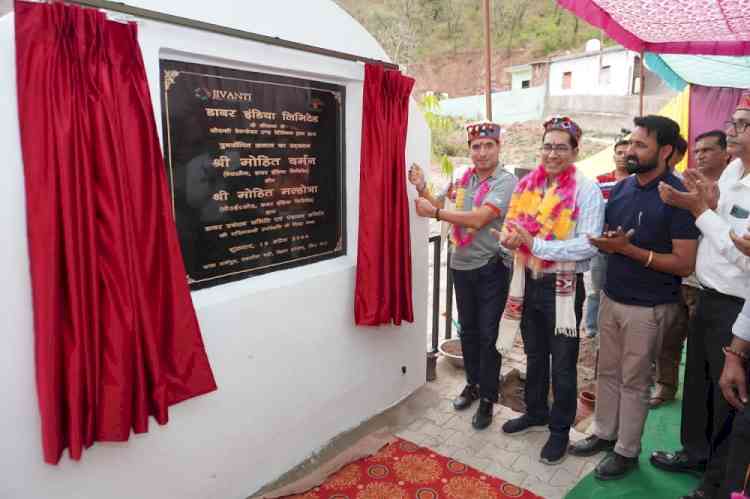Awareness, early diagnosis and good immunity levels can prevent Tuberculosis, say doctors at Columbia Asia Hospitals
Author(s): City Air NewsGurgaon, March 23, 2016: The prevalence of Tuberculosis (TB), one of the world's deadliest diseases, is a major health concern of India for centuries. It second only to HIV/AIDS as the greatest killer worldwide...

Gurgaon, March 23, 2016: The prevalence of Tuberculosis (TB), one of the world's deadliest diseases, is a major health concern of India for centuries. It second only to HIV/AIDS as the greatest killer worldwide due to a single infectious agent. According to the union health ministry, 40 percent of Indians are affected with tuberculosis (TB). Meanwhile, World Health Organization has cited the country to have the highest burden of TB accounting a quarter of the world’s annual incidence of the disease.
Although TB was close to being eradicated in the developed world, it is a serious concern in developing countries, where the high prevalence TB is mainly due to malnutrition, crowded living conditions and poor tuberculosis control infrastructure. In India, undiagnosed and mistreated cases of TB continue to drive the grave scenario. Early detection can help improve care and control of the disease.
Early diagnosis, correct treatment and completion of treatment are an absolute necessity, if we are to bring down the incidence, prevent relapse and emergence of drug resistance. As we observe World Tuberculosis Day, doctors at Columbia Asia Hospital, stress that greater awareness can prevent a large number of tuberculosis deaths, many of which happen due to lack of reach of proper treatment and drug resistance.
The risk of developing active tuberculosis is a two-step process, beginning with initial exposure to and infection by Mycobacterium tuberculosis followed by subsequent progression to disease.
“In India, the rates of infection are actually so high that the bacteria are prevalent in the air. This is why a large number of people in India have latent bacteria. This means the bacteria remains passive inside the body because the body has strong resistance against it. This latent infection becomes active when the body’s immunity levels plummet due to any reason. This is why people with weakened immune systems have a much greater risk of falling ill from TB. Notably, a person living with HIV is about 26 to 31 times more likely to develop active TB because HIV destroys the body’s immunity. This explains why TB is a leading killer of HIV-positive people causing one fourth of all HIV-related deaths.
Another hurdle to the treatment is that within a short time of commencing treatment the patient begins to feel well and symptoms are relieved to a great extent. This is equated with cure, which is not so. Patients tend to discontinue treatment and relapse with multi-drug resistant TB, which is more virulent, difficult to treat and expensive,” says Dr. Piyush Goel,Consultant Pulmonology Gurgaon.
The good part is that TB is curable. Although a contagious infection that starts usually from the lungs but may spread to other organs of the body, it can be treated with a 6-9 months treatment. A failure to complete treatment results in a more dreadful problem associated with TB today – that of drug resistance.
“Anti-tuberculosis (TB) drug resistance arises due to improper use of drugs in drug-susceptible TB patients. Improper or irrational use often implies failure to ensure that patients complete the whole course of treatment. Once the patient takes the drug for a period of time and then skips it without completing the course, the bacteria in his or her body develop resistance to this particular drug. This drug will now have no impact of the infection when consumed again,” adds Dr. Piyush Goel, Consultant Pulmonology Gurgaon.
Essentially, drug resistance arises in areas with weak TB control programs and this is today a major problem in India where the medical fraternity is struggling to deal with the problem of multi drug resistant Tb.
How to Minimize Risk and Prevent Infection: those with pulmonary TB are contagious for 2-3 weeks after starting treatment. The patient is advised to wear a mask for this period
• Eat Healthy: Eating a balanced diet full of vegetables and fruits to keep the supply of vitamins and minerals abundant is important to keep the body healthy and immunity good.
• Live Healthy Lifestyle: A growing number of our present day concerns stem from lifestyle disorders. Living a sedentary life, lack of sun exposure, absence of physical exercise weakens the body and makes it prone to illness. Proper control of diabetes is essential to prevent lowering of immune status.
• Never Ignore Symptoms: Always report any symptoms that may indicate an infection. Persistent cough, recurrent fever, fatigue, weakness, loss of appetite or weight are symptoms that should never be ignored.

 cityairnews
cityairnews 















